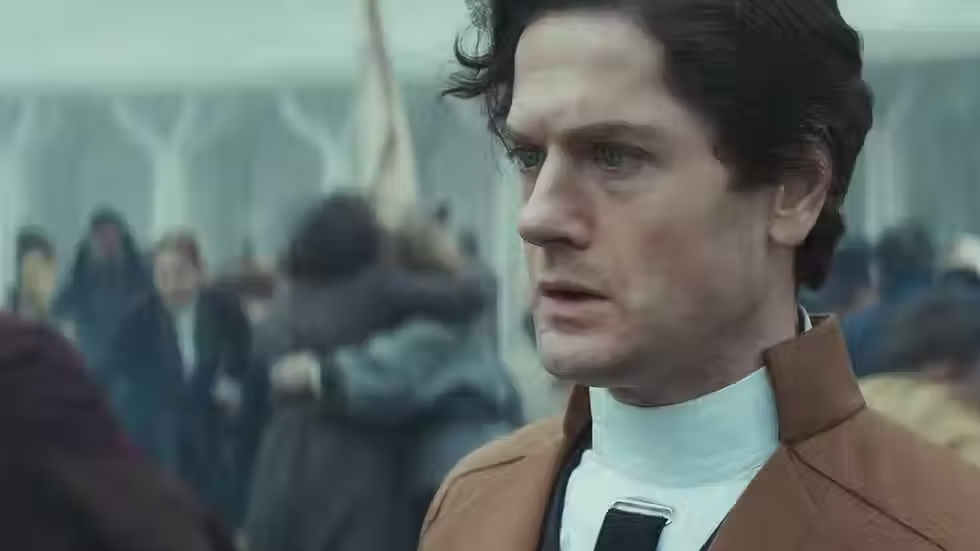Review: Oscar-Nominated Animated Shorts 2017
- ogradyfilm
- Dec 2, 2018
- 3 min read

Having seen all of the Animated Feature Oscar nominees but one (My Life as a Zucchini), I decided to head over to IFC Center and see what the Animated Shorts category had to offer. The screening ended up being an emotional roller coaster ride. Although the movies were obviously produced independently of one another, a few recurring themes emerged, namely the myriad ways in which human beings perceive time and the bittersweet bond between parent and child.
In the first film, a mournful Western entitled “Borrowed Time”, a middle-aged sheriff stands at the edge of a cliff, haunted by the memory of how, as a teenager, on that very spot, he let his father down, with tragic consequences. Over the course of seven minutes, the filmmakers craft a deeply moving meditation on the nature of failure: sometimes, we’re simply not ready for the responsibilities thrust upon us; we can either let our mistakes consume us, or accept them and find the strength to carry on.

Where “Borrowed Time” intercuts between the protagonist’s traumatic past and tortured present, the second film, “Pearl", presents a linear narrative, condensing about a decade’s worth of material into six minutes—but this just makes the gradual evolution of its characters, a single father and his adorable little girl, that much more resonant. Observing the action from the passenger seat of the car out of which the pair initially lives, we watch as the well-meaning dad struggles to make ends meet as a busker. Eventually, he abandons his personal ambitions in order to better provide for his daughter, but as she grows older, she rebels and leaves home to start her own band. Ultimately, however, their shared passion for music allows them to reconcile, and all of his sacrifices and compromises pay off when she achieves her dreams. As a lover of stories in which the power of art brings people together, this one definitely hit the spot.
Next up was “Piper”, which doesn’t deal directly with time (unless you subscribe to the film school theory that, due to the transformative nature of editing, all works of cinema are implicitly about time), but certainly explores familial bonds as a mother sandpiper attempts to gently teach her timid chick to be self-sufficient. I already saw this one when it played in front of Finding Dory, but it remains a stunning technical achievement, seamlessly marrying photorealism with cartoon anthropomorphism.

“Blind Vaysha”, on the other hand, mentions family only tangentially, instead offering the program’s most explicit and thorough examination of the perception of time. The eponymous character doesn’t literally lack eyesight; rather, her green left eye peers into the past of whatever it observes, while her brown right eye experiences the future. Thus, her parents and suitors are simultaneously rowdy children and withered octogenarians, the tree in her front yard at once a lush sapling and an ancient, termite-eaten husk. The concept of being functionally blind to the world around us, tormented by the choices we’ve made and paralyzed by the fear of what might come to pass, is compelling, but the direct address and call to action that conclude the short are a bit too didactic for my taste.
The final film, “Pear Cider and Cigarettes”, was the only real outlier (the circular narrative structure serves the story rather than any thematic purpose, and the central character’s relationship with his parents is less immediately important than his turbulent friendship with the narrator), but that hardly diminishes its excellence as a character study. While the opening evokes classic, hardboiled neo-noir (receiving a letter from a dead man, gravelly voiceover), the short quickly develops into something far more personal: a graphic memoir (similar to My Friend Dahmer in its presentation, though thankfully not in its content) depicting a young, reckless athlete’s physical deterioration following years of self-abuse. The actual animation is limited, featuring as much recycled footage as the ‘90s Spider-Man cartoon, but the visuals—largely monochrome, with occasional splashes of color from a vibrant sunset, or flashing police lights, or the protagonist’s jaundiced complexion—are nevertheless gorgeous, and the storytelling more than compensates for any aesthetic shortcomings.
To sum it all up: an hour-and-a-half well spent. Now I just need to track down My Life as a Zucchini to fully satisfy my animation addiction.
[Originally written February 19, 2017.]





Comments